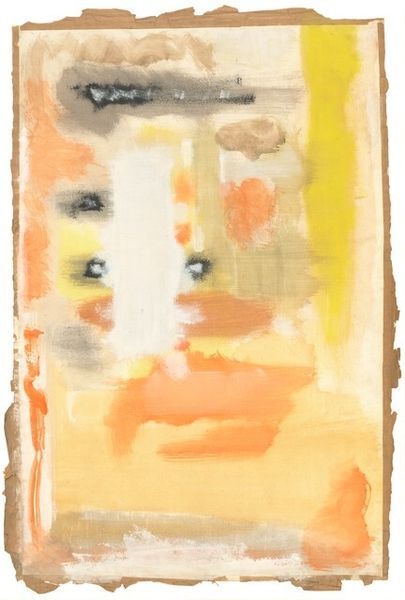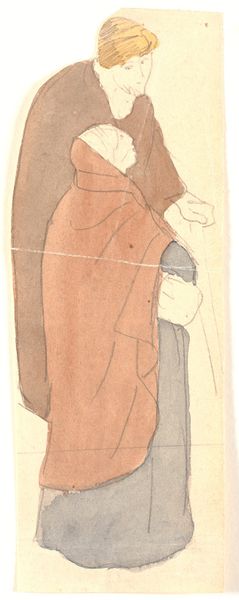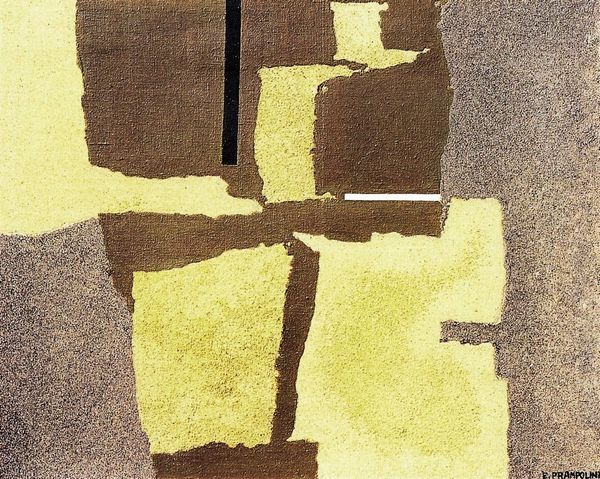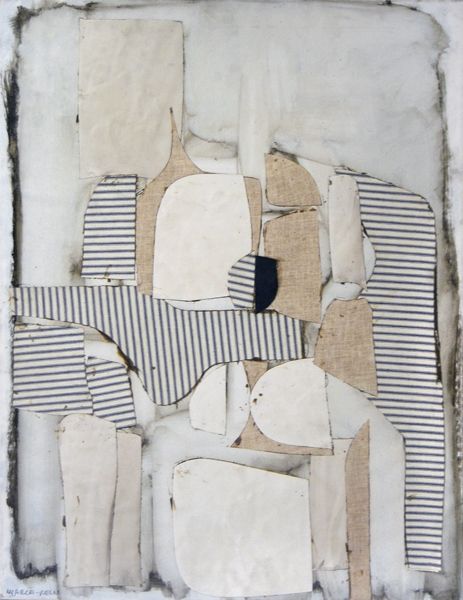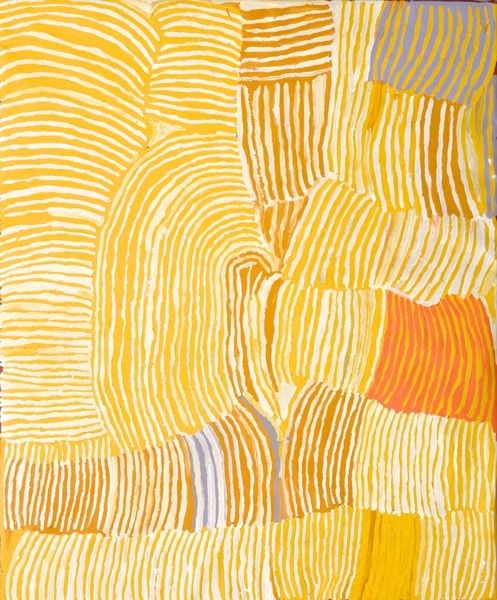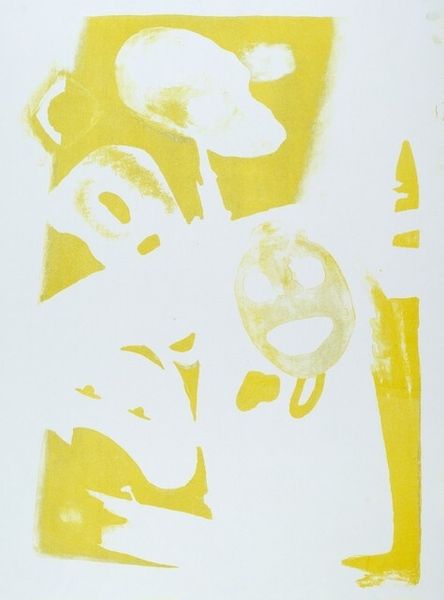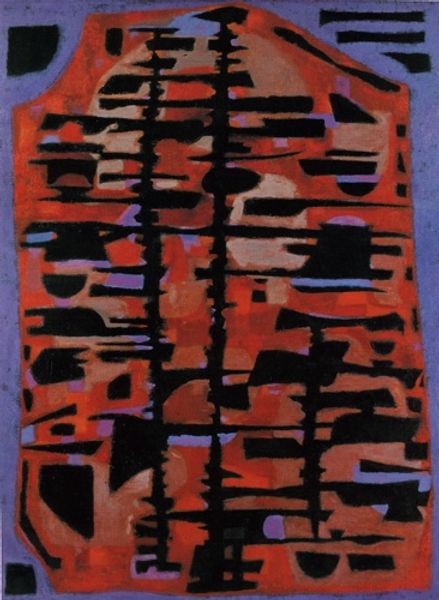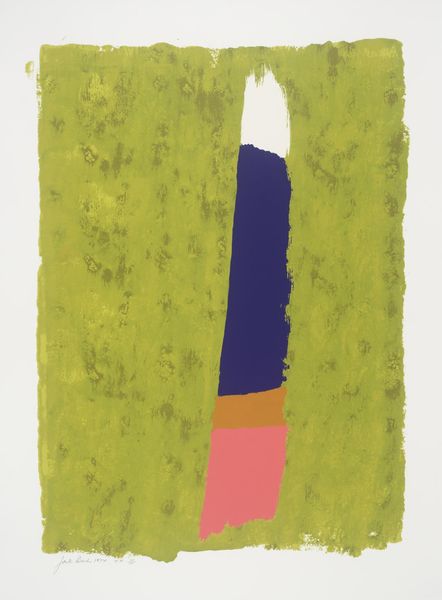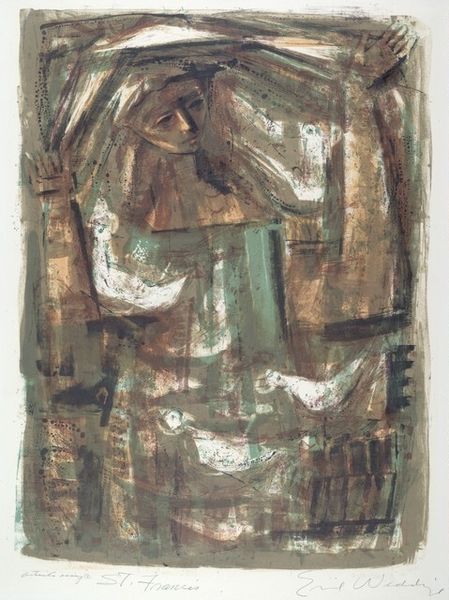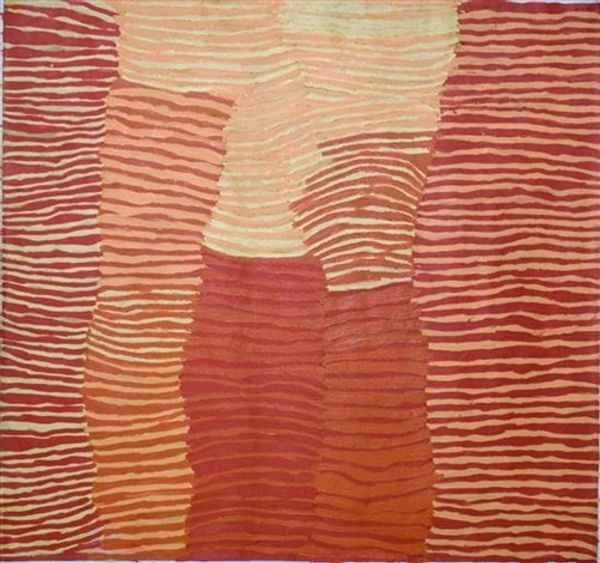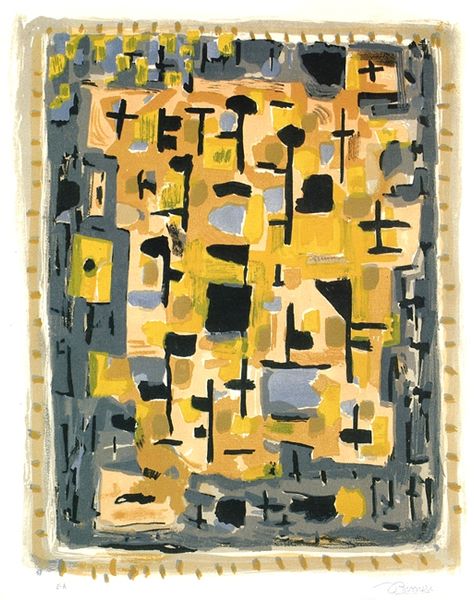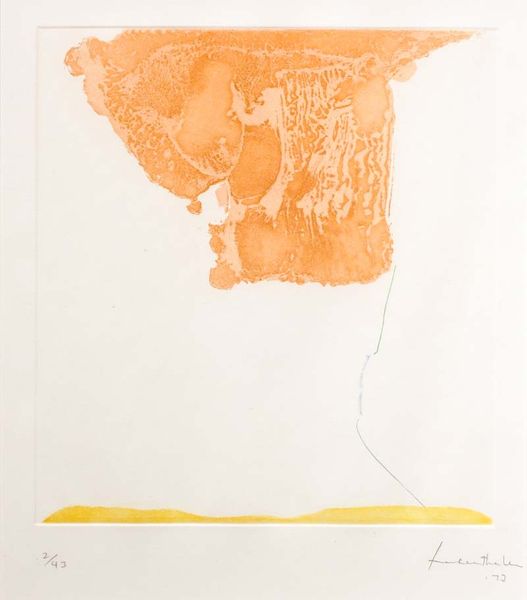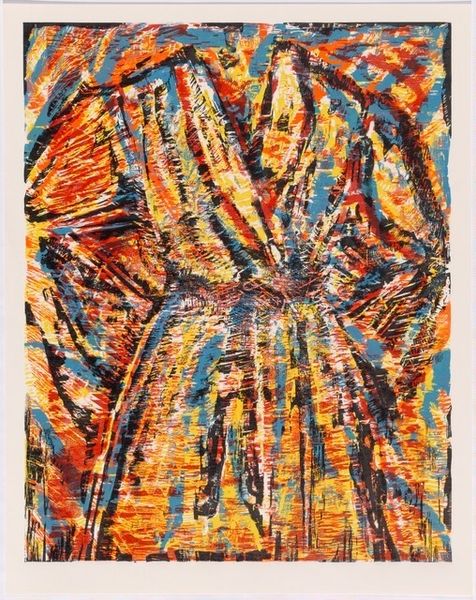
fibre-art, weaving, textile
#
fibre-art
#
contemporary
#
weaving
#
textile
#
abstraction
Copyright: Sheila Hicks,Fair Use
Editor: We're looking at Sheila Hicks' "Rivage de Chablis," a fibre art piece from 1988. It's predominantly yellow, with this interesting horizontal band running through the middle. What stands out to you from a structural perspective? Curator: Primarily, the pronounced materiality commands attention. Observe the textured surface, its palpable three-dimensionality achieved through varied weaving techniques. The yellow, ranging from ochre to brilliant cadmium, presents a sophisticated interplay of light and shadow. Note the insertion of the linear element; its placement bisects the composition, creating both tension and equilibrium. Editor: What do you make of the colour choices and that bisecting element? Is there a connection there? Curator: Colour operates here as a fundamental structural component. The modulation of yellow generates depth, imbuing the surface with dynamism. As for that intriguing ivory inclusion, it introduces a disruption, challenging the established rhythm. It serves as a focal point, directing the viewer's gaze and prompting a reconsideration of the artwork's spatial relationships. We may ask what kind of line it inscribes into the overall system of textile’s syntax. Editor: That makes me consider the tactile quality more, as well. You can almost imagine what it would feel like to touch the work! Curator: Precisely. This tangible quality is central to Hicks’s oeuvre. She subverts the conventional two-dimensionality of the canvas, presenting us with an object that privileges sensory engagement and material presence. Editor: That's so interesting; I hadn't considered how much the materials themselves contribute to the overall structure and meaning. Thanks for pointing that out. Curator: My pleasure. Analyzing art from a formalist perspective offers a robust toolkit for decoding its inherent visual language. I’m also intrigued to now do more research about the artist and the context surrounding the work, because there might be other influences present here, too!
Comments
No comments
Be the first to comment and join the conversation on the ultimate creative platform.
